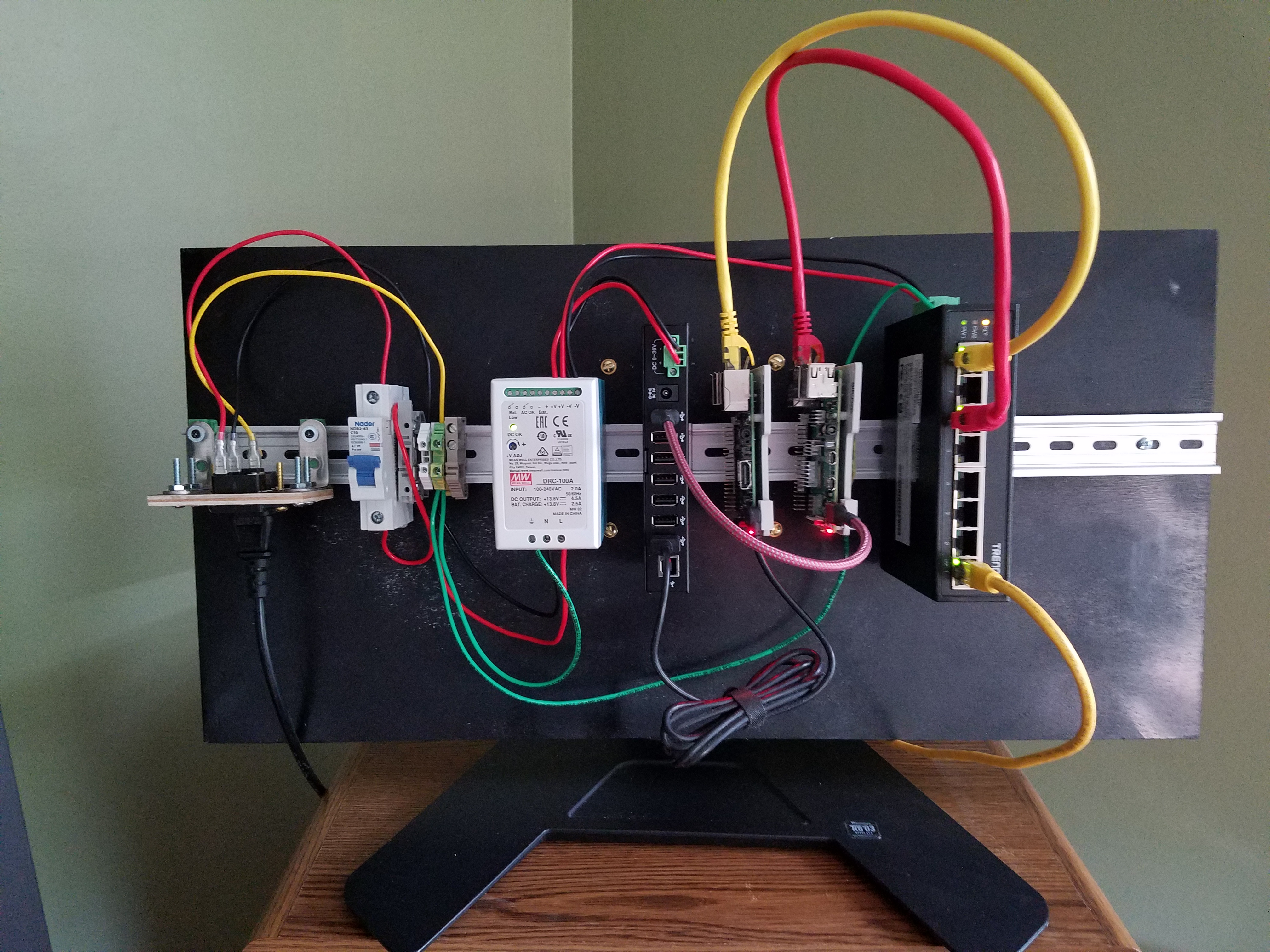PI Rack

Project “PI Rack” has finished it’s first phase of development. The whole idea was to take my two Raspberry PIs, one being a VPN server and the other this very website, and mount them on a DIN Rail with all the hardware to power and communicate with them.
Referring to the above PIcture, from left to right, the 120VAC receptacle that supplies main power, a 10A circuit breaker, a 2A fused terminal block, a pass-through terminal block for the neutral, and a ground terminal block. Next is a 12VDC power supply, a USB hub used only for 5V power, two Raspberry PIs, and an Ethernet switch. There’s another ground block just to the left of the switch but it doens’t show in the PIcture.
The 120V receptacle is an IEC320 that takes a common cord used to power a PC computer. I had to make the plate used to hold the receptacle because I could not find one on-line. In fact, I couldn’t find anything useful on-line for this type of receptacle. The plate was made out of plywood with the center cut out for the receptacle, which was designed to be panel mounted. I attached the plate to a couple of corner braces used to hold furniture together and attached those on a couple of DIN mounts. I’m going to improve on this design by adding a housing for the plate. The thought here is to design something in 3D graphics software, such as Blender, and take it to someone with a 3D printer.
I added a 2A fused after the circuit breaker to protect the power supply. The power supply gives me 12VDC to power the USB hub and Ethernet switch. In retrospect I should of gotten one that delivers 24VDC or even 48VDC because the hub and switch can take that amount of voltage and higer voltage means a more stable supply of power to more devices.
I disabled the WIFI on both PIs for security reasons, so a wired Ethernet was necessary. The Ethernet cable running under the panel connects to the switch on the router.
Incidentally, the panel, which is made of plywood, is mounted on an old montor stand. The monitor was an old Acer that just didn’t want to work anymore. So I took it apart and salvaged some parts from it including the stand.
Eventually I’m going to add my NAS PI to this system as soon as I get a replacement PI. The old one for some reason doesn’t work anymore, refusing to boot anything at all. To bad because it’s a failry new PI. I may also add a cloud PI and maybe a home automation hub-PI to this system. Adding PIs is really easy now!